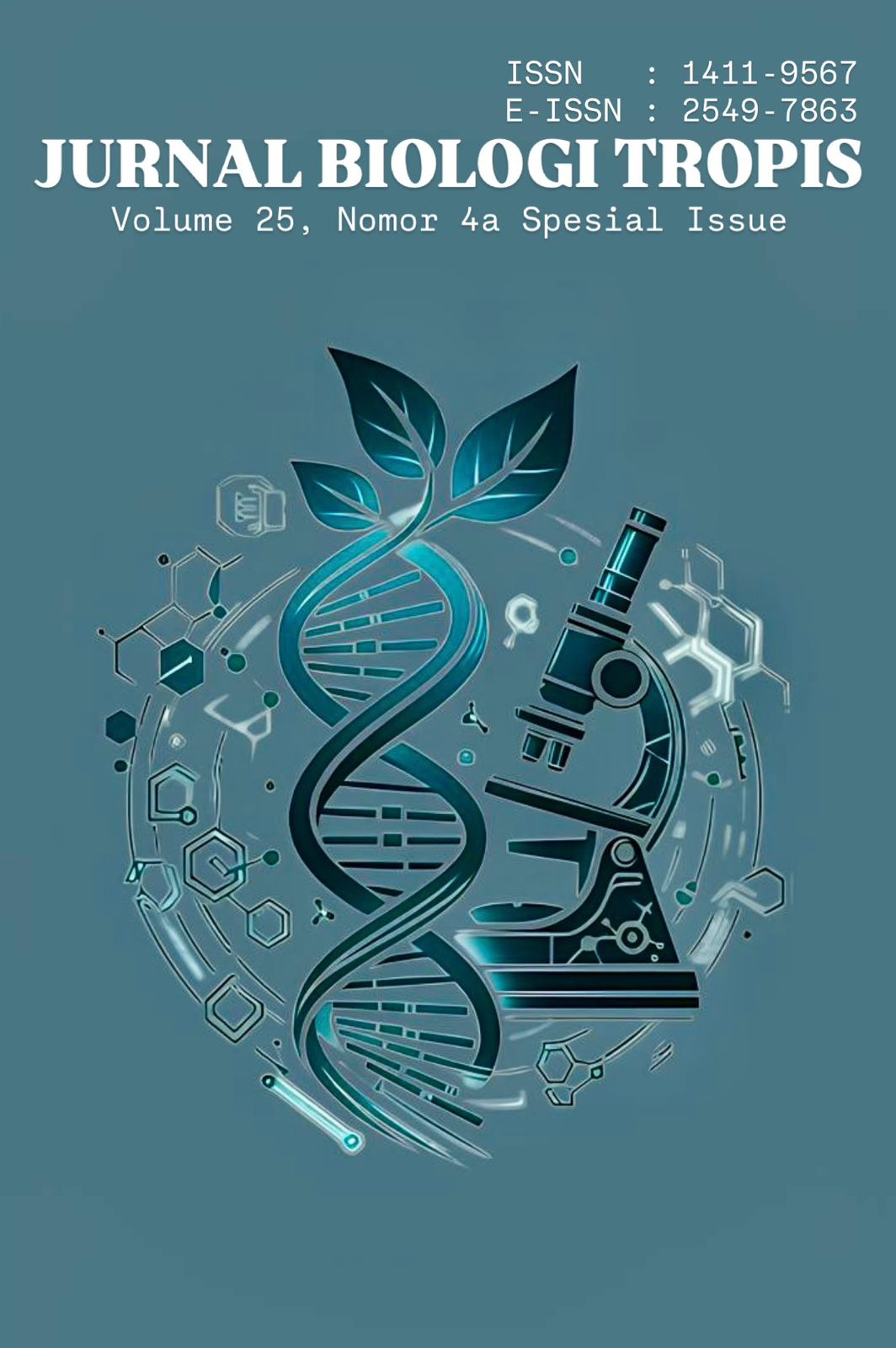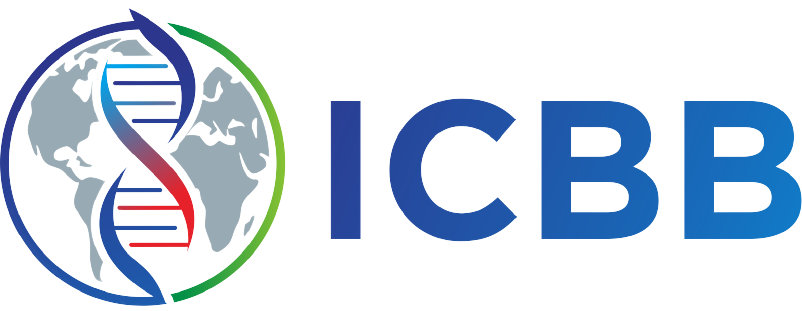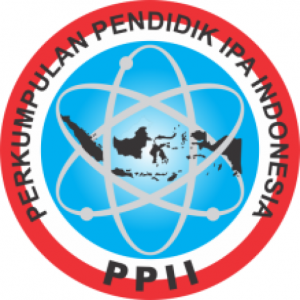Exploration of Acid-Tolerant Bacteria for Cellulose Production from Fruit Waste
Authors
Auliyya Intan Mellaniy Arifin , Kristanti Indah Purwani , Endry Nugroho PrasetyoDOI:
10.29303/jbt.v25i4a.10381Published:
2025-11-10Issue:
Vol. 25 No. 4a (2025): Special IssueKeywords:
Acid-tolerant bacteria, Bacterial cellulose, Fruit waste.Articles
Downloads
How to Cite
Downloads
Metrics
Abstract
Bacterial cellulose is a natural biomaterial synthesized by certain bacterial species by producing protofibril threads that bind together to form strands of cellulose fibers or membranes. Bacterial cellulose has been widely used in various industrial fields, including biomedical such as wound dressings, the textile industry as a raw material for clothing, and the food industry for the manufacture of nata de coco. To support this industrial application, it is necessary to characterization of bacterial cellulose to increase the efficiency and quality of the production process. Therefore, this study aims to characterize bacterial cellulose produced by acid-fast bacteria isolated from fruit waste. This research involved the isolation, purification and characterization of cellulose producing bacteria. The result showed that acid-tolerant bacteria that were successfully isolated were 23. Purification and screening of bacteria that have the potential to produce cellulose obtained 6 isolates, namely SB 6, SB 13, SB 19, SB 20, SB 21, and SB 23. Macroscopic observation found that all bacteria have a circular colony, entire colony edge, shiny colony surface, convex elevation shape, while the colony color is different, SB 6 is yellowish cream, SB 13, 19, 23 cream, SB 20 orangeish cream, and SB 21 white. Macroscopic identification found that all isolates have Gram-negative types, and red cell color, for SB 6 cell shape is round and SB 13, 19, 20, 21, 23 bacilli (rods). The results of biochemical tests of cellulose-producing acid-resistant bacteria are all positive in the catalase test, Simmons Citrate test and carbohydrate fermentation test. The Indole test and Voges Proskauer test obtained negative test results on all isolates. The starch hydrolysis test was only positive on SB 21. The gelatin hydrolysis test was positive on isolates SB 6, 20, 21, 23, negative on isolates SB 13 and SB 19. The motility test for SB 6, 13, 19, 21 was positive, for SB 23 it was negative. The Methyl Red test was positive on isolates SB 6, 19, 20, 23, negative on isolates SB 13 and SB 21.
References
Abba, M., Nyakuma, B. B., Ibrahim, Z., Ali, J. B., Razak, S. I. A., & Salihu, R. (2022). Physicochemical, morphological, and microstructural characterisation of bacterial nanocellulose from Gluconacetobacter xylinus BCZM. Journal of Natural Fibers, 19(11), 4368-4379. doi : http://dx.doi.org/10.1080/15440478.2020.1857896.
Akmihyawi, R. A., Elshan, M., Nazeer, A., Sitong, Z., Huan, C. (2024). Produksi dan Karakterisasi Selulosa Bakteri Oleh Rhizobium sp. yang Siisolasi Dari Akar Kacang. Rep Sains 14 , 10848 (2024). https://doi.org/10.1038/s41598-024-61619-w.
Amalia, D., Nisrina, N. R., Nor, H., Rina, O., Zevira, F. A., Bambang, S., Sri, A. (2022). Pengaruh Volume Substrat Terhadap Kerja Enzim Katalase Menggunakan Respirometer Ganong Sebagai Rekonstruksi Desain Kegiatan Praktikum Siswa. Journal of Biology Education Science & Technology. Vol 5 (2), hal 02-17. ISSN : 2614-8064.
Amrillah, N. A. Z., Hanum, F. F., & Rahayu, A. (2022). Studi Efektivitas Metode Ekstraksi Selulosa dari Agricultural Waste. In Prosiding Seminar Nasional Penelitian LPPM UMJ. (Vol. 1, No. 1). E-ISSN: 2745-6080.E-ISSN : 2745-6080. http://jurnal.umj.ac.id/index.php/semnaslit.
Boby, C. A., Roni, A., Muhisin, S. (2021). Produksi, Karakterisasi dan Aplikasi Selulosa Bakteri di Bidang Farmasi. Journal Of Pharmacy and Science. Vol 4, No. 2. Hal 12-28. doi : https://doi.org/10.36341/jops.v4i2.1887.
Chusniasih, D., Erma S., Erinaa, S. (2023). Isolasi dan Uji Aktivitas Selulolitik Bakteri Asal Limbah Bagas. Jurnal Ilmu Pertanian Indonesia. 28 (3), 3386-395. doi:https://doi.org/10.18343/jipi.28.3.386.
Costa, C., Nuno, G. A., Carla, S., Eduardo, F. M. (2020). Textile Industry in a Changing World : Challenges of Sustainable Development. U. Porto Journal of Engineering. Vol 6 (2) : 86-97. doi: https://doi.org/10.24840/2183-6493_006.002_0008.
Fallo, Gergonius, & Yuni, S. (2016). Isolasi dan Uji Biokimia Bakteri Selulolitik Asal Saluran Pencernaan Rayap Pekerja (Macrotermes Spp,). Bio-Edu. Vol 1 (2), pp. 27-29. ISSN : 2527-6999. https://jurnal.unimor.ac.id/index.php/JBE/article/view/501/286.
Fatriasari, W., Masruchin, N. and Hermiati, E. (2019). Selulosa: Karakteristik dan Pemanfaatannya. Jakarta: LIPI Press. ISBN: 978-496-047-6.
Fernianti, D., Atikah, Endang, L. (2018). Pengaruh Waktu dan Ratio Volume Ekstrak Air Belimbing Wuluh : Air Pada Proses Ekstraksi Selulosa Dalam Seludang Pisang. Distilasi, Vol 3 (1) : 35-40. ISSN: 2528-7397.
Harianja, J. W., Idiawati, N., & Rudiyansyah. (2015). Optimasi Jenis dan Konsentrasi Asam pada Hidrolisis Selulosa dalam Tongkol Jagung. JKK, 4(4), 66–71. ISSN: 2303-1077.
Haseena, M., Najla, A.A., Moehamed, A.S. (2024). Identification of Cellulose Producing Bacterial Strains : An Eco-Friendly and Cost-effective Approach. Journal Pure Appl Microbiology. Vol 18 (1). doi : http://dx.doi.org/10.22207/JPAM.18.1.32.
Herwin, H., Fitriana, F., Ayyub, H. N. (2020). Isolasi Bakteri Penghasil Selulosa Dari Buah-Buahan Di Pasar Tradisional Makassar. Jurnal Farmasi. Vol 12 (1) : 47-50. ISSN: 2502-9444.
Horikawa, Y., Tatsuki, K., Yuto, H., Ryota, K., Satoshi, N., Ryo, F. (2022). Effect of Orientation and Degree of Polymerization on Tensile Properties In The Cellulose Sheets Using Hierarchical Structure of Wood. Cellulose. 29;2885-2898. doi : https://doi.org/10.1007/s10570-021-04160-7.
Husna, A., Yuliani, Lisa, L. (2018). Identifikasi Bakteri Endofit Isolat B2 dan B3 dari Akar Tanaman Ubi Jalar (Ipomoea batatas L.) var. Papua Patippi Berdasarkan Karakter Fenotipik. Lentera Bio. Vol. 7 No. 1 : 76-82. ISSN : 2252-3979. doi : http://ejournal.unesa.ac.id/index.php/lenterabio.
Karimah, A., Ridho, M. R., Munawar, S. S., Adi, D. S., Damayanti, R., Subiyanto, B., & Fudholi, A. (2021). A review on natural fibers for development of eco-friendly bio-composite: characteristics, and utilizations. Journal of materials research and technology, 13, 2442-2458. doi : https://doi.org/10.1016/j.jmrt.2021.06.014.
Liau, S. S., Hidayat, M., & Sulistyo, H. (2023). Potensi Selulosa Bakteri Sebagai Pembalut Luka Ideal dan Penghantar Obat (Drug Delivery). In Seminar Nasional Teknik Kimia" Kejuangan". (pp. 2-1). ISSN : 1693-4393.
Mehrotra, R., Samiksha, S., Nidhi, S., Kohinoor, K. (2023). Bacterial Cellulose : An Ecological Alternative as A Biotextile. Biosciences Biotechnology Research Asia. Vol 20 (2) : 449-463. doi : http://dx.doi.org/10.13005/bbra/3101.
Nuryanti, S., Fitriana, A. Rini, P. (2021). Karakterisasi Isolat Bakteri Penghasil Selulosa Dari Buah Naga Merah (Hylocereus polyrhizus). Jurnal Farmasi. Vol 13 91), hal 71-79. EISSN : 2085-4714.
Rangaswamy, B. E., Basavaraj, S. H. (2015). MicrobialCellulose Production From Bacteria Isolated from Rotten Fruit. International Journal of Polymer Science. Vol 15 (1). pp 280784. doi : https://doi.org/10.1155/2015/280784.
Sari R & Apridamayanti P. (2014) Cemaran Bakteri Eschericia coli Dalam Beberapa Makanan Laut yang Beredar di Pasar Tradisional Kota Pontianak, Artikel Jurnal Ilmiah Farmasi, 2 (2): 14-19. doi : https://doi.org/10.26874/kjif.v2i2.28.
Sembiring, A. (2019). Isolasi Dan Uji Aktivitas Bakteri Penghasil Selulase Asal Tanah Kandang Sapi. Jurnal Biologi Science & Education. Vol 8 (1). ISSN: 2252-858X.
Singh, S.B., Gowtham, H.G., Murali, M., Hariprasad, P., Lakshmeesha, T.R., Murthy, K.N., Niranjana, S.R. (2019). Plant growth promoting ability of ACC deaminase producing rhizobacteria native to Sunflower (Helianthus annuus L.). Biocatalysis and Agricultural Biotechnology, 18, 101089. https://doi.org/10.1016/j.bcab.2019.101089.
Siruhwani, D., & Rasyidah, R. (2023). Isolasi dan Aktivitas Bakteri Selulolitik Pada Limbah Diapers. BIOEDUSAINS : Jurnal Pendidikan Biologi dan Sains. Vol 6 (2). doi : https://doi.org/10.31539/bioedusains.v6i2.6641.
Sukmawati. (2018). Isolasi Bakteri Selulolitik dari Limbah Kulit Pisang. BIOTROPIC The Journal Of Tropical Biology. Vol 2 (1). ISSN 2580-5029.
Suparno. (2020). Potensi Dan Masa Depan Serat Alam Indonesia Sebagai Bahan Baku Aneka Industri. Jurnal Teknologi Industri Pertanian. 30 (2) : 221-227. doi: https://doi.org/10.24961/j.tek.ind.pert.2020.30.2.221.
Wibowo, N. A., & Isroi. (2015). Potensi In-Vivo Selulosa Bakterial Sebagai Nano-Filler Karet Elastomer Thermoplastics (ETPS). Perspektif. Vol 14 (2). Hal : 103-112. ISSN : 1412-8004.
Wasim, M., Mushtaq, M., Saif, U.K., Amjad, F., Naeem, M.A., Khan, M.R., Salam, A., Wei, Q. (2021). Development of Bacterial Cellulose Nanocomposites : Synthesis of Bacterial Cellulose Nanocomposites With Metalic and Metallicoxide Nanoparticles by Different Methods and Techniques for Biomedical Applications. Journal of Industrial Textiles. Vol 5 (2S). doi : https://doi.org/10.1177/1528083720977201.
Yanti, N. A., Sitti, W. A., Nurhayani, H. M., La O. A., Suriana, Taufik, W. (2021). Characterization of Bacterial Cellulose Produced by Acetobacter xylinum Strain LKN6 Using Sago Liquid Waste as Nutrient Source. Journal of Biological Science. 24, 335-344. doi: https://doi.org/10.3923/pjbs.2021.335.344.
License
Copyright (c) 2025 Auliyya Intan Mellaniy Arifin, Kristanti Indah Purwani, Endry Nugroho Prasetyo

This work is licensed under a Creative Commons Attribution 4.0 International License.

Jurnal Biologi Tropis is licensed under a Creative Commons Attribution 4.0 International License.
The copyright of the received article shall be assigned to the author as the owner of the paper. The intended copyright includes the right to publish the article in various forms (including reprints). The journal maintains the publishing rights to the published articles.
Authors are permitted to disseminate published articles by sharing the link/DOI of the article at the journal. Authors are allowed to use their articles for any legal purposes deemed necessary without written permission from the journal with an acknowledgment of initial publication to this journal.


























